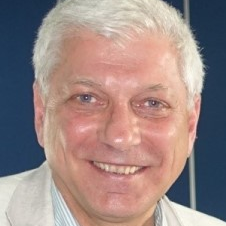Advanced Information, Computation, and Control Systems for Distributed Environments
A special issue of Computation (ISSN 2079-3197). This special issue belongs to the section "Computational Engineering".
Deadline for manuscript submissions: closed (31 December 2022) | Viewed by 11447
Special Issue Editors
Interests: artificial intelligence; geoinformation systems; web-technologies; mathematical modeling; cloud computing
Special Issues, Collections and Topics in MDPI journals
2. Ivannikov Institute for System Programming of the Russian Academy of Sciences, Alexander Solzhenitsyn st., 25. 109004 Moscow, Russia
3. Problem-Oriented Cloud Computing Environment International Laboratory, South Ural State University, Prospekt Lenina 76, 454080 Chelyabinsk, Russia
Interests: grid and cloud; multiobjective resource optimization; security; uncertainty; scheduling; heuristics and meta-heuristics; adaptive resource allocation; Internet of Things
Special Issues, Collections and Topics in MDPI journals
Interests: computational models; applied software packages; knowledge engineering; distributed computing; multi-agent technologies; simulation modeling
Special Issues, Collections and Topics in MDPI journals
Special Issue Information
Dear Colleagues,
The International Workshop on Information, Computation, and Control Systems for Distributed Environments (ICCS-DE 2021) will be held in Irkutsk, Russia (July 5-9, 2021), https://iccs-de.icc.ru/. The workshop organizers are Matrosov Institute for System Dynamics and Control Theory of Siberian Branch of Russian Academy of Sciences, Irkutsk, Russia and CICESE Research Center, Ensenada, Mexico.
Today, the digitalization of various aspects of our life and work is becoming a reality. This is based on the implementation and use of a large spectrum of software systems for various purposes. However, the architectures and concepts of many of them are based on technologies that have evolved to varying degrees over the past several decades. Therefore, they often reach the limits of their capabilities when applied in the conditions of modern digitalization and do not provide the quality use of sophisticated data management to enable multiparty participation in various activities.
In this regard, we provide this Special Issue of the journal Computation that addresses the theory and practice in developing advanced information, computing, and control systems related to different subject domains of information, technical, economic, and other fields of human activity. The benefits of using advanced systems are multifold. Advanced systems affect the acceleration and increase in the reliability of data processing, quality and timeliness of intelligence and decision making, improvement of service of end-users, financial performance, etc. In general, this significantly increases the competitiveness of subjects that actively apply advanced information, computation, and control systems in their activities. At present, the architecture of modern systems for performing various day-to-day business operations is usually distributed. Therefore, it is expected that special attention will be paid to the systems that function in various distributed environments.
The topics of the Special Issue include but are not limited to the following research fields:
- Theoretical foundation of information, computing, and control systems;
- Methods, tools, and technologies of the system development;
- Development and application of systems in computer science;
- Mathematical modeling of systems;
- Control systems;
- Decision support systems;
- Intelligent systems;
- Multiagent systems;
- Parallel and distributed computing systems.
We kindly invite you to participate in this Special Issue and contribute to the development of the theory and practice of advanced information, computation, and control systems. We particularly invite authors of selected papers presented at the workshop and included in the conference proceedings to submit extended versions of their work to this Special Issue of the journal Computation. However, we also invite other researchers to present their original scientific and practical results in the aforementioned fields in this Special Issue.
Dr. Igor Bychkov
Prof. Dr. Andrei Tchernykh
Dr. Alexander Feoktistov
Guest Editors
Manuscript Submission Information
Manuscripts should be submitted online at www.mdpi.com by registering and logging in to this website. Once you are registered, click here to go to the submission form. Manuscripts can be submitted until the deadline. All submissions that pass pre-check are peer-reviewed. Accepted papers will be published continuously in the journal (as soon as accepted) and will be listed together on the special issue website. Research articles, review articles as well as short communications are invited. For planned papers, a title and short abstract (about 100 words) can be sent to the Editorial Office for announcement on this website.
Submitted manuscripts should not have been published previously, nor be under consideration for publication elsewhere (except conference proceedings papers). All manuscripts are thoroughly refereed through a single-blind peer-review process. A guide for authors and other relevant information for submission of manuscripts is available on the Instructions for Authors page. Computation is an international peer-reviewed open access monthly journal published by MDPI.
Please visit the Instructions for Authors page before submitting a manuscript. The Article Processing Charge (APC) for publication in this open access journal is 1800 CHF (Swiss Francs). Submitted papers should be well formatted and use good English. Authors may use MDPI's English editing service prior to publication or during author revisions.
Keywords
- Grid and cloud computing
- Resource optimization
- Scheduling
- Resource allocation
- Internet of Things
- Artificial intelligence
- Geo-information systems
- Mathematical modeling







